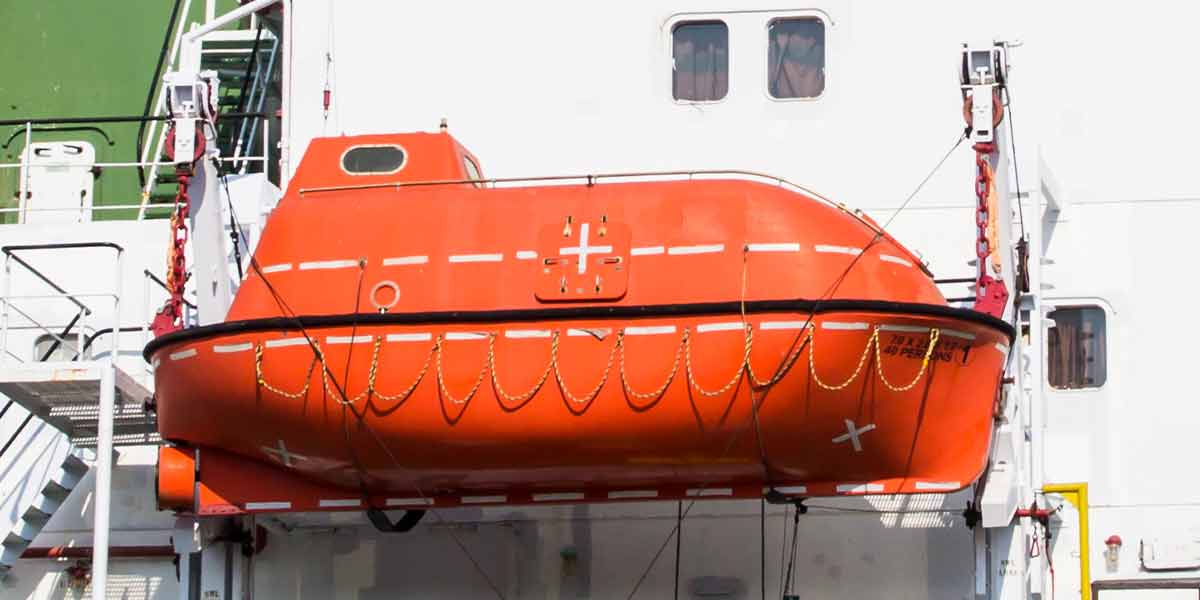Table Of Content

In addition to standard lifeboats, cruise ships may also have lifeboat tenders that serve as both a rescue vessel and a form of transportation during port calls. The inflatable life rafts on cruise ships are available for the remaining 25% of passengers who may not find space in the traditional lifeboats. While these rafts are usually reserved for crew members, guests can also use them if needed.

Titanic sinking
This collaborative approach ensures that industry standards and regulations are met while considering the specific characteristics and operational needs of each cruise ship. By considering these factors, cruise ship operators can determine the most appropriate number of lifeboats required for their specific vessel. It is essential to adhere to these guidelines and regulations to prioritize the safety and well-being of all passengers and crew members on board. The Titanic disaster was more than 100 years ago, and it remains a vivid, cautionary tale. Today, are there enough lifeboats on cruise ships sufficient to save every single person on the ship?
Cruise Ship Lifeboats – How Are They Tested?
First seen on vessels like the Oasis of the Seas, these larger lifeboats incorporate toilets, reflecting an acknowledgment of potential longer rescue periods and the basic needs of occupants. Lastly, lifeboats supply essential first-aid supplies for treating injuries and fulfilling medical needs during survival situations. These first-aid kits come in waterproof cases to ensure their contents remain usable and protected from the elements. A muster station is a designated area on a cruise ship where passengers gather in case of an emergency.
Carnival Ship Responds to Emergency, Rescues Six After Boat Capsizes - Cruise Hive
Carnival Ship Responds to Emergency, Rescues Six After Boat Capsizes.
Posted: Wed, 13 Dec 2023 08:00:00 GMT [source]
How Big Are the Lifeboats On Cruise Ships?
There is provision for all guests to be rescued safely, but it is physically impossible to have adequate numbers of lifeboats for everyone on a ship. Governance indicates that cruise ships must be equipped with sufficient lifeboats to board a full complement of individuals in only ten minutes, which is the optimal time frame. Tests are usually done in fine weather over the day with agile volunteers.
Survival Equipment and Supplies
Cruise ship inflatable life rafts are available for the remaining 25% of passengers who cannot fit in the standard lifeboats. Although visitors can also use rafts if needed, these are usually reserved for staff members, with guests boarding the lifeboats first. The typical lifeboat that is seen on many cruise ships has a capacity of about 150 people. In the case of an emergency, passengers can be swiftly and effectively evacuated thanks to this number. Typically, the standard lifeboat found on many cruise ships can hold around 150 passengers. This number ensures that, in the event of an emergency, passengers can be evacuated quickly and efficiently.

Cruise ship lifeboats must be made of noncombustible and flame-retardant materials, according to SOLAS. They would encumber the decks, and rather add to the danger than detract from it. The more common 150-capacity lifeboats are usually 8.1m to 9.6m in length. For example, if the ship is is on fire or is it listing to one side so much, the lifeboats can’t be launched. SOLAS was started after the events of the sinking of the Titanic when there weren’t enough lifeboats for everyone. It’s not surprising you may wonder if there are enough lifeboats on board to save everyone.
Cruise ship lifeboat capacity is carefully calculated and monitored to ensure the safety of all passengers and crew. At the beginning of each cruise, all passengers are required to participate in a safety drill or lifeboat drill. The drill, as well as lifeboat capacity and provisioning are all done in accordance to standards set by the International Convention for Safety of Life at Sea (or SOLAS). Their catamaran-style hull increases stability, while twin diesel engines and twin propellers allow these "mega" lifeboats to move at speeds of up to 6 knots.
Survival Equipment: What’s Inside a Lifeboat?
These regulations provide a standardized framework that ensures a consistent level of safety across the global cruise industry. All lifeboats on cruise ships are usually around 7.3 meters or longer, with all seats able to support a 100 kg person (220lbs). Modern cruise ships are typically equipped with gravity davit systems, which allow lifeboats to be swiftly launched even in rough seas.
The first lifeboats were simply small boats with open tops and oars for passengers to use for propulsion. Prior to modern compact engine designs rowing was the only way of controlling a small craft other than sailing. This presented some obvious challenges, as even with adequately strong persons, synchronous rowing is a skill so difficult that even Olympians use a coxswain. Technology however brought forth solutions such as the Fleming Gear, allowing passengers to simply push and pull levers that drew a screw (propeller), combining the uncoordinated strength of rowers. Larger lifeboats, however, are now required due to the introduction of larger cruise liners. Because of this, lifeboats on some of the bigger, more recent ships can hold up to 370 people.
During these emergency situations, it is important for passengers and crew members to follow the instructions of trained personnel and remain calm. The use of lifeboats should be carried out in an orderly and controlled manner to ensure the safety and well-being of everyone involved. It is important to note that lifeboats and life rafts are strategically located on different parts of the ship to ensure accessibility in case of emergencies.
As you dive into the history of lifeboats on cruise ships, you’ll learn that regulations played a crucial role in shaping their development. Inflatable life rafts on cruise ships are not meant to replace traditional lifeboats but to complement them. They also provide oars and other manual propulsion methods as a backup in case the engine fails. Operational testing is essential to lifeboat maintenance, as it ensures that lifeboats can be safely launched, maneuvered, and recovered. Crew members typically conduct these tests during scheduled drills, which may occur in various ports of call when most passengers are off the ship. Partially enclosed lifeboats, also known as open lifeboats, are more commonly seen on older cruise ships.
These lifeboats are fully enclosed with a hard shell, providing shelter from harsh weather conditions, waves, and possible fire hazards. Cruise ships always have enough lifeboats and rafts to accommodate all passengers and crew members. Instead, SOLAS allows for a minimum of 75% lifeboat capacity, with a minimum of 37.5% of the ship’s passenger capacity accommodated on each side of the ship. Lifeboats on cruise ships also serve another purpose, acting as tender boats when needed. In certain situations, cruise ships must anchor away from the shore, requiring smaller tender vessels to transport passengers between the ship and the dock. Cruise lifeboats often double as tender boats, transporting passengers to shore in ports where the ship does not park at a dock.

No comments:
Post a Comment